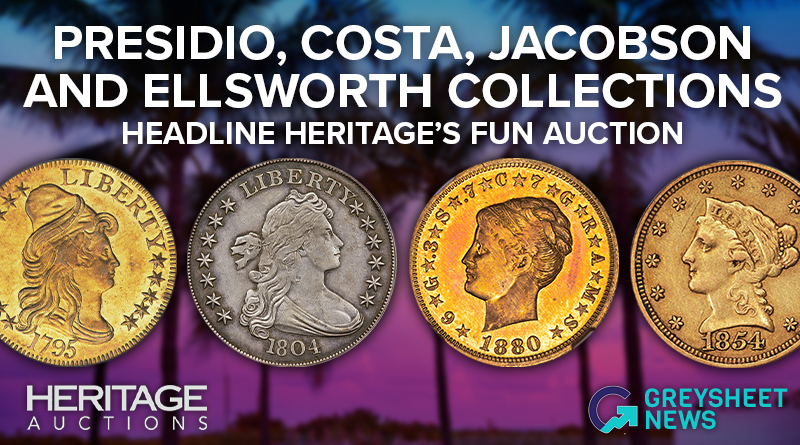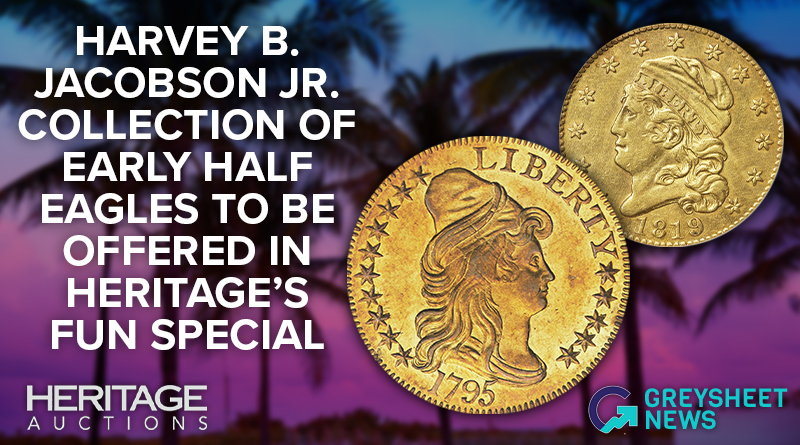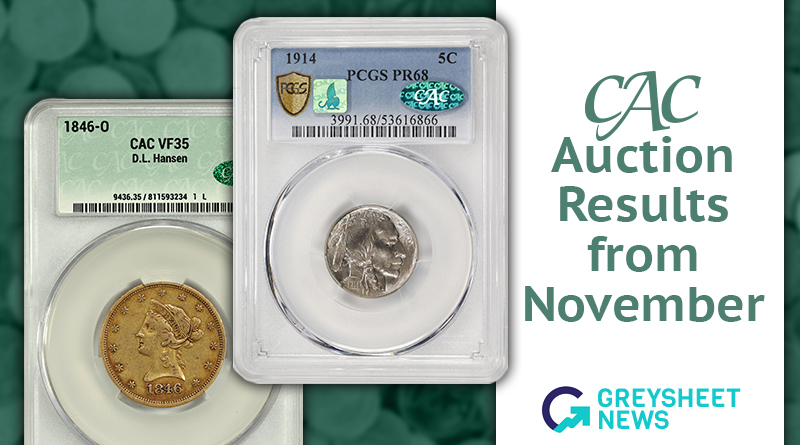Greysheet & CPG® PRICE GUIDE
- U.S. Coins /
- Pattern Coinage /
-
Patterns (1814) Values
Year
Sort by
About This Series
History and Overview
In existence today are three examples struck in platinum of the 1814 half dollar, obverse and reverse in regular combination, dies unrusted, normally used to strike Overton-107 in silver. These pieces were struck in 1814, or perhaps in 1815.1 Platinum was considered to be a precious metal at the time, but was not widely used in the Western Hemisphere for wrought items or coinage.
The circumstances of the production of the platinum 1814 half dollars are not known. One example bears the letter P counterstamped many times on the obverse, and with the word “Platina” engraved on the reverse by the eagle’s head, this referring to platinum.
Collecting Perspective
J-44 is of special importance as the only known 19th-century pattern coin to have been made in platinum, and, further, as an object of desire by collectors of Capped Bust half dollars of the 1807–1836 design. Moreover, it is one of only a few original early 19th-century United States pattern coin varieties in existence today.
Catalog Detail
Legal Disclaimer
The prices listed in our database are intended to be used as an indication only. Users are strongly encouraged to seek multiple sources of pricing before making a final determination of value. CDN Publishing is not responsible for typographical or database-related errors. Your use of this site indicates full acceptance of these terms.




| Patterns (1814) | Value Range | Favorite | |||
|---|---|---|---|---|---|
| Patterns (1814) | Value Range | ||||
|
$150,000
-
$150,000
$150,000 - $150,000
|
||||
From the Greysheet Marketplace
Buy Now: $3,695.00
Buy Now: $2,890.63
Buy Now: $120,000.00
Buy Now: $38,900.00
Buy Now: $5,500.00
Buy Now: $37,000.00
Buy Now: $3,121.88
Buy Now: $37,000.00
Buy Now: $31,500.00
Buy Now: $125,000.00
Related Stories (powered by Greysheet News)
View all news
Greysheet Catalog Details
History and Overview
In existence today are three examples struck in platinum of the 1814 half dollar, obverse and reverse in regular combination, dies unrusted, normally used to strike Overton-107 in silver. These pieces were struck in 1814, or perhaps in 1815.1 Platinum was considered to be a precious metal at the time, but was not widely used in the Western Hemisphere for wrought items or coinage.
The circumstances of the production of the platinum 1814 half dollars are not known. One example bears the letter P counterstamped many times on the obverse, and with the word “Platina” engraved on the reverse by the eagle’s head, this referring to platinum.
Collecting Perspective
J-44 is of special importance as the only known 19th-century pattern coin to have been made in platinum, and, further, as an object of desire by collectors of Capped Bust half dollars of the 1807–1836 design. Moreover, it is one of only a few original early 19th-century United States pattern coin varieties in existence today.
Catalog Detail
Legal Disclaimer
The prices listed in our database are intended to be used as an indication only. Users are strongly encouraged to seek multiple sources of pricing before making a final determination of value. CDN Publishing is not responsible for typographical or database-related errors. Your use of this site indicates full acceptance of these terms.










 Loading more ...
Loading more ...











